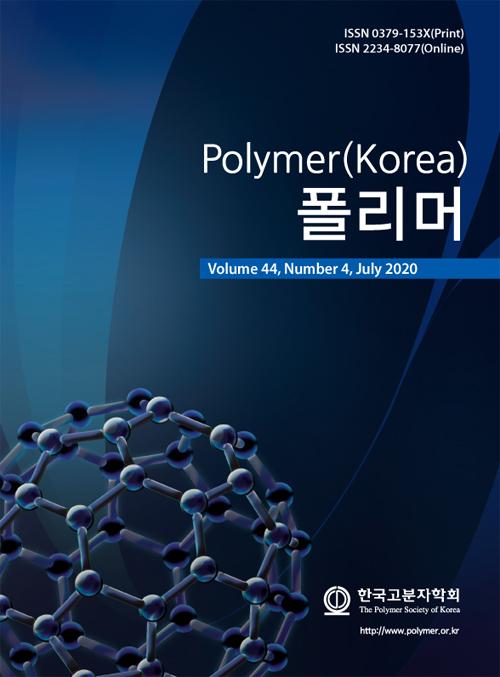- Influences of Bridge Group on Thermal and Mechanical Properties of Epoxy Resins
Liu Yuan*,**,***, Zhao Jun****, Liu Ai-Qin****, Liu Xiao-Qing***, and Luo Jun*,†

*Engineering Research Center for Materials Protection of Wear and Corrosion of Guizhou Province, Guiyang University, Guiyang 550005 (P. R. China)
**University of Chinese Academy of Sciences, Beijing 100049 (China)
***Key Laboratory of Bio-based Polymeric Materials Technology and Application of Zhejiang Province, Ningbo Institute of Materials Technology and Engineering, Chinese Academy of Sciences, Ningbo 315201 (China)
****Shanghai Space Propulsion Technology Research Institute, No. 3888, Yuanjiang Road, Minhang District, Shanghai 201100 (P. R. China)- 에폭시 수지의 열 및 기계적 특성에 대한 Bridge Group의 영향
In order to obtain
thermosetting epoxy resin, it is the prerequisite condition that the epoxy
precursor must contain at least two epoxy groups. Thus, bridge group is needed
to link the epoxy groups, and naturally, the chemical structure of the bridge
group may also influence the thermomechanical performances of the cured epoxy
resin. However, literature about the effects of bridge group on properties of
cured epoxy is seldom published. To fill the gap, three model epoxy monomers
containing different bridge groups have been synthesized from
4,4'-dihydroxydiphenyl, 1,1-bis(4-hydroxyphenyl)cyclohexane and bisphenol A in
this work. After chemical structure confirmation, all of the monomers are cured
by methylhexahydrophthalic anhydride (HMMPA), and the properties of the
obtained cured network are evaluated by differential scanning calorimetry
(DSC), dynamic thermomechanical analysis (DMA), tensile test and scanning
electron microscope (SEM). The results show that bulky bridge group can
effectively increase the glass transition temperature, enhance the tensile
strength, and enlarge elongation at break of the cured epoxy resin.
Keywords: epoxy, bridge group, thermomechanical performance
- Polymer(Korea) 폴리머
- Frequency : Bimonthly(odd)
ISSN 0379-153X(Print)
ISSN 2234-8077(Online)
Abbr. Polym. Korea - 2023 Impact Factor : 0.4
- Indexed in SCIE
 This Article
This Article
-
2020; 44(4): 415-424
Published online Jul 25, 2020
- 10.7317/pk.2020.44.4.415
- Received on Nov 26, 2019
- Revised on Mar 20, 2020
- Accepted on Mar 25, 2020
 Correspondence to
Correspondence to
- Luo Jun
-
Engineering Research Center for Materials Protection of Wear and Corrosion of Guizhou Province, Guiyang University, Guiyang 550005 (P. R. China)
- E-mail: luojun_gyu@sina.com








 Copyright(c) The Polymer Society of Korea. All right reserved.
Copyright(c) The Polymer Society of Korea. All right reserved.